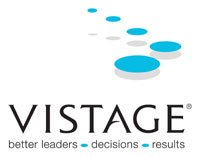|  Executive Tools Executive Tools
- Executive Summary
- Self Assessment Checklist
Expert Practices Articles
- Why Creativity is Crucial
- Innovation and The Bottom Line
- Engineering Breakthroughs
- "Do-It-Yourself" Creativity Generating
- Using Creativity Sessions to Cut Costs
- Best Practices of Innovative Organizations
- Increasing Personal Creativity
Tools & Analysis
- Tools to Create Breakthroughs
Request
the Entire Best Practice Module: Innovation/Creativity
Why Creativity is Crucial
The most productive leaders incorporate creativity and innovation
into their companies with the same predictability as they do profit-and-loss
statements.
The four Vistage experts interviewed for this series -- Jordan
Ayan, Bryan W. Mattimore, Carl Robinson and Steven L. Snyder --
all work with Fortune 500 clients. They say that TEC-size companies
often give short shrift to the creative part of themselves, of their
companies and of the people who work with them.
"Traditional linear thinking will solve 90 to 95% of your
problems," says Mattimore. Innovation-enhancing techniques
are for the toughest five to 10%.
Often, innovation is seen only as a way to add to the top line
with new products and services. "Vistage members should know
that these techniques can also be used to make the business more
efficient, to cut costs and to do things quicker, better, smarter,"
Mattimore says.
Robinson identifies three foundations for organizational innovation.
They are:
- Leadership
- Training
- Organizational Openness
Request
the Entire Best Practice Module: Innovation/Creativity
Innovation and The Bottom Line
Can you really afford not to place a premium on innovation in your
organization?
Vistage experts gave us several examples of how encouraging creativity
and innovation has had a major bottom-line impact in companies.
- The Catholic Knights of Columbus Insurance Company -- a $100
million business -- used "problem redefinition" to boost
sales 52 percent.
- A leather Western wear manufacturer virtually saved its life
by brainstorming a new market for their products.
Request
the Entire Best Practice Module: Innovation/Creativity
Engineering Breakthroughs
Mattimore has identified four foundations of breakthrough thinking.
- Questions -- Reframing problems to make sure you are solving
the right one.
- Metaphors -- Taking two different ideas, finding associations
between them, and coming up with solutions or ideas from the exercise.
Request
the Entire Best Practice Module: Innovation/Creativity
"Do-It-Yourself" Creativity Generating
There are many ways to jump-start your organization's creativity
generator.
Alternative Perceptions -- Snyder recommends these approaches to
get a new perspective on the problem you're trying to solve. Among
the techniques:
- Imagine that your problem actually belongs to someone else --
not you.
- Imagine that you have the opposite problem.
- Think that it is five years from now, and the problem is solved.
- Enlist other people, in your imagination, as helpers in solving
the problem.
Request
the Entire Best Practice Module: Innovation/Creativity
Using Creativity Sessions to Cut Costs
Mattimore was asked to facilitate brainstorming sessions at a billion-dollar
personal products company.
He conducted 25 all-day sessions with 12 people per session. Yield:
$50 million in cost reductions and quality improvements.
Mind-Mapping for Cost-Cutting: Have employees diagram the details
of their jobs, then ask a facilitator to help them compare notes
and see where savings are hidden.
To get the most impact from cost-cutting sessions, Mattimore recommends
that you:
- Assign monetary values to the ideas.
- Encourage people to share the nitty-gritty of their jobs.
- See if you can generalize once you find a detail worth evaluating.
- Ask people to "feel the pain" of their day-to-day
work. Wherever they are frustrated about a task they do, there
are opportunities to make changes.
Request
the Entire Best Practice Module: Innovation/Creativity
Best Practices of Innovative Organizations
Innovative organizations have built into their structures several
practices that serve to perpetuate innovation, says Robinson.
He identifies these practices as:
- Celebrating successes
- Inviting "20-20 hindsight"
- Encouraging playfulness and "blue-sky" thinking
Request
the Entire Best Practice Module: Innovation/Creativity
Increasing Personal Creativity
"When we're in our normal, high-task, divided attention state
-- which is, by definition, high stress -- we can only see things
the way we normally do. It's like the great line from the Talmud,
'We don't see things as they are; we see things as we are',"
says Snyder.
"The key is to access the part of the mind that dreams at
night -- the 'heart mind' -- versus 'the brain mind' that you use
when you're awake," says Snyder. To relax the mind, Snyder
says you need to go into an alpha brain wave state, which is a state
of heightened relaxation. In other words, you need to learn to daydream.
Ayan says that if we want to improve our personal creativity, we
must increase our creative "C.O.R.E." The acronym stands
for:
Request
the Entire Best Practice Module: Innovation/Creativity
|